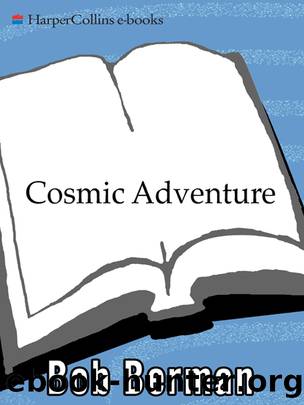Cosmic Adventure by Bob Berman

Author:Bob Berman
Language: eng
Format: epub
Publisher: HarperCollins
WHAT’S IN A NAME?
There’s an obvious reason why English is considered the richest language: It has the most words. If you want to express yourself in Swahili, you can approximate what you mean, but you probably couldn’t fine-tune it exactly. Here it’s different. We can describe someone as dour, or we can say he’s melancholy. Or dolorous, sad, saturnine, downcast, gloomy, dreary, morose, glum, woeful…it goes on and on. Foreigners may very well think that we need 200,000 words—forty times more than all the naked-eye stars in the night sky—just so we can say bummer thirty different ways.
Yet we lack some really helpful vocabulary. We’re unnecessarily wordy when it comes to modern events, feelings, and situations simply because nobody’s coined concise terms for a myriad of contemporary needs. There’s no verb for the act of clicking a mailbox lid a few times to make sure the letter’s gone down. No noun for that spot on a dog’s belly that, when touched, will make his back leg twitch. There’s no word for that cold, painful feeling in the head when eating ice cream too quickly.
Think of how you feel when seeing another car pull into a coveted parking spot just ahead of you. While there are fifteen different ways to say sad, there’s only the single word frustration to cover the full spectrum of modern letdowns, each with its own rich palette of unpleasant nuance.
The same is true of space science. As the universe opens up to our instruments and to our minds, we remain saddled with an amazing lack of terms to describe the newly discovered phenomena and places. Worse, in many cases the existing names are misleading or insipid but remain curiously unchanged through the centuries.
With a breathtaking lack of imagination, what did astronomers name Jupiter’s astonishing, enduring, larger-than-Earth cyclonic storm? Duh…the Red Spot. When the plucky Voyager 2 spacecraft visited Neptune for the first time in August 1989 and revealed that giant aquamarine world to have its own semipermanent features, the most prominent was quickly and simplemindedly named the Dark Spot.
The rings of Saturn, beautifully bizarre 150,000-mile disks with an amazing, delicate thinness analogous to a sheet of paper the size of a city block, have no equal anywhere in the known universe. They can readily be seen through any good telescope as separate features, each with different widths, brightnesses, and degrees of transparency. Their inspirational names? A, B, and C.
The cluster of galaxies in which we live, a place where a trillion suns and probably an equal number of planets compete in loveliness with swirling scarlet nebulae of unspeakably intricate designs—this magnificent hometown group of thirty galaxies is called: the Local Group.
Apparently it wouldn’t do any harm to have a few poets or naturalists join the naming committee of the International Astronomical Union, which bestows terms and titles for nothing less than the contents of the cosmos.
Even the simplest one-word names for the universe’s inventory tend to be archaic or lacking in creativity. Galaxy came from the
Download
This site does not store any files on its server. We only index and link to content provided by other sites. Please contact the content providers to delete copyright contents if any and email us, we'll remove relevant links or contents immediately.
Tools of Titans by Timothy Ferriss(7811)
Turbulence by E. J. Noyes(7700)
Astrophysics for People in a Hurry by Neil DeGrasse Tyson(5000)
Secrets of Antigravity Propulsion: Tesla, UFOs, and Classified Aerospace Technology by Ph.D. Paul A. Laviolette(4990)
Design of Trajectory Optimization Approach for Space Maneuver Vehicle Skip Entry Problems by Runqi Chai & Al Savvaris & Antonios Tsourdos & Senchun Chai(4839)
Room 212 by Kate Stewart(4732)
Pale Blue Dot by Carl Sagan(4613)
The David Icke Guide to the Global Conspiracy (and how to end it) by David Icke(4377)
A Journey Through Divination and Astronomy by Publishing Pottermore(4248)
Apollo 8 by Jeffrey Kluger(3512)
Goodbye Paradise(3444)
Losing the Nobel Prize by Brian Keating(3425)
COSMOS by Carl Sagan(3346)
The Five People You Meet in Heaven by Mitch Albom(3334)
How to Read Water: Clues and Patterns from Puddles to the Sea (Natural Navigation) by Tristan Gooley(3239)
Brief Answers to the Big Questions by Stephen Hawking(3239)
How to Read Nature by Tristan Gooley(3077)
The Order of Time by Carlo Rovelli(3073)
A Brief History of Time by Stephen Hawking(2819)
